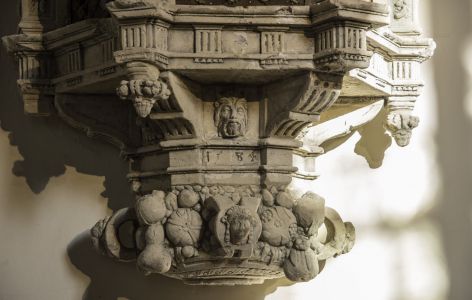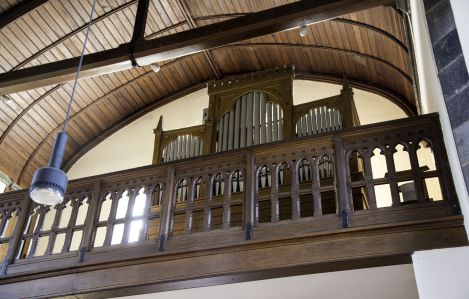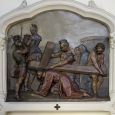Church | XIII-XIX | Gothic, Neogothic | Catholic Church



Map
Opening hours
01 January - 31 December
Mon 10.00 - 17.00
Tue 10.00 - 17.00
Wed 10.00 - 17.00
Thu 10.00 - 17.00
Fri 10.00 - 17.00
Sat 10.00 - 17.00
Sun 10.00 - 17.00
Religious offices
Description
Built in the 12th and 13th centuries as the chapel of Loyers castle, the building was extended in the 19th and 20th centuries to become the village parish church. It features a single nave, built in 1904 by the architect Joostens, a wooden ceiling and an ogival choir containing a theotheca or eucharistic tower, dated 1584.
The church and cemetery have preserved numerous funerary monuments from the 16th and 17th centuries. Among these is the slab of Godefroid d'Ève and Hélène de Salmier, dated 1552, embedded in the boundary wall of the old cemetery and mentioning the former county of Namur. However, only three fragments of this effigy slab remain. On the edge of one of them is an inscription in tiny Gothic letters: Godefroid d'Eve, chevalier de Loyers, at one time bailiff of Bouvignes, lieutenant under Monsieur le Marquis de Berghes, captain general of the duchy of Luxembourg and county of Chiny and since then lieutenant under monsieur le sénéchal du Hainaut, governor and sovereign bailiff of the country and county of Namur (...).
Source: Connaître la Wallonie - Frédéric Marchesani
KIKIRPA : Photo-library online
Photos
Remarkable elements
Theotheca
Theotheca, or towers of the Blessed Sacrament, originated in Germany and appeared in churches in France, Switzerland and Italy between the fifteenth and seventeenth centuries. In Belgium, these stone "furnishings", which provided a permanent display of the Blessed Sacrament, have all but disappeared. Loyers is still one of the few parishes to have a theotheca.
The date on the lower part is 1584. The Eucharistic tower is imposing, set into the wall and measuring 2.50 metres in height. It is carved from a very friable stone, Maastricht tufa.
At the bottom of the building, fruit has been carved along with the date of its creation. The upper level features representations of the four Evangelists, separated by grilles that protected the Blessed Sacrament. The craftsman has restored the original colour of the grille: brick instead of bronze green. On the "third floor", a representation of the Last Supper with, on either side, an illustration of the gathering of the manna and one of the meeting of Melchisedech and Abraham. The tea library ends with a pelican and its young, another symbol of the Eucharist.
Source: Diocese of Namur
Statue of Saint Sebastian
To the right of the choir is a polychrome wooden statue of Saint Sebastian, the patron saint of the parish. Under the persecution of Diocletian, this army officer was denounced as a Christian to the emperor. Bound naked to a tree, he was fired upon by his own soldiers. Riddled with arrows, he survived only to be caned to death.
Source: Abbé Fabien Mathot


























